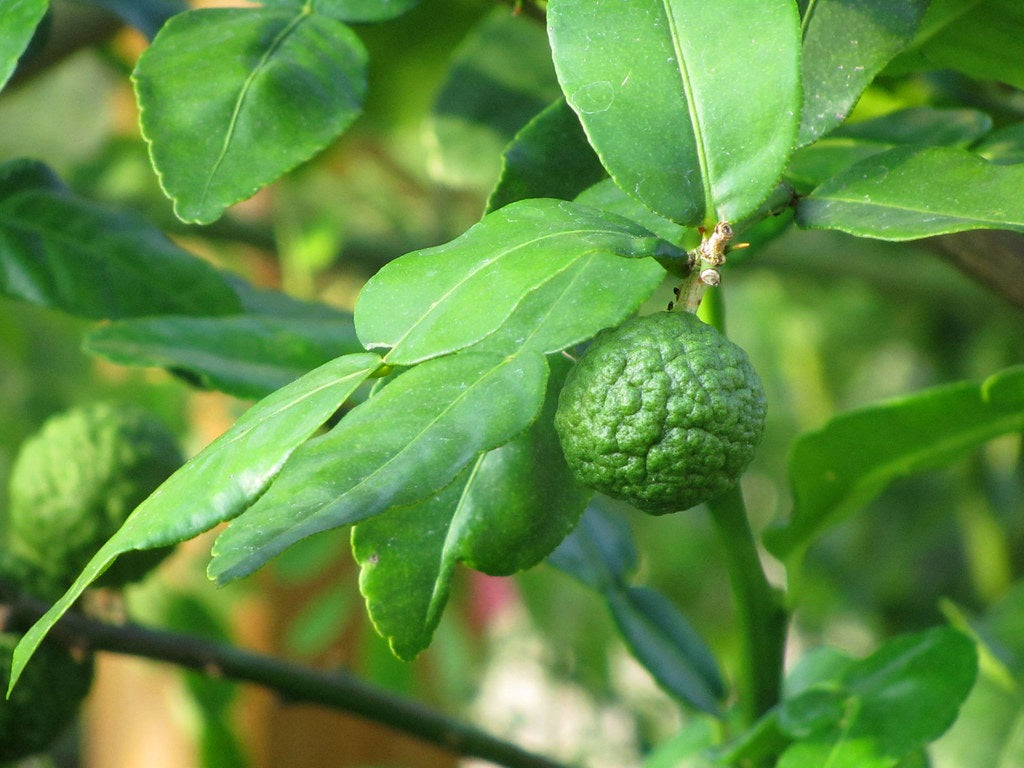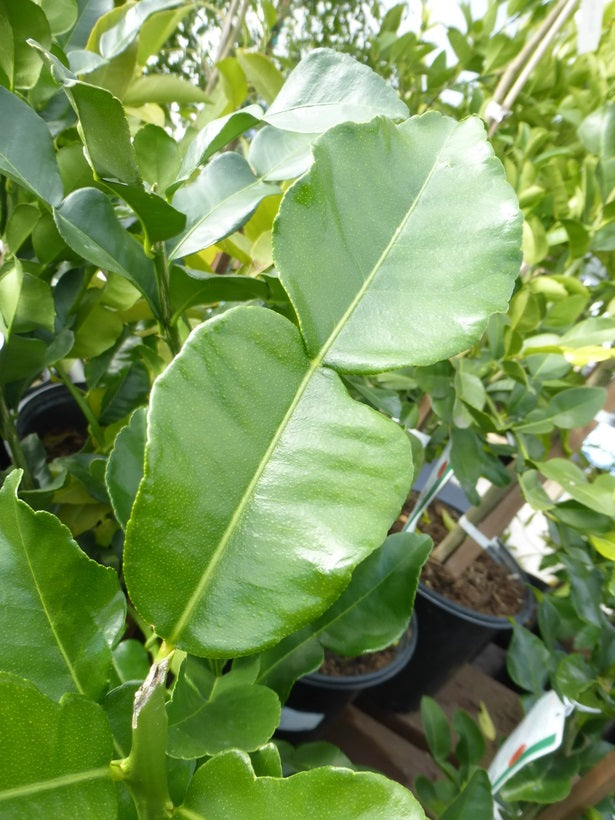Description
Citrus hystrix, known as the "Makrut Lime" is a small tree or shrub, notable for its aromatic, double-lobed green leaves and fragrant white flowers that bloom from Djilba to Kambarang (late winter to spring). Besides its culinary appeal, the rough-skinned limes it produces can be used in various dishes.
Whether in pots or directly in the ground, this lime variety thrives in sunlit locations with good drainage. Enhancing sandy soils with a high-quality soil conditioner will greatly benefit its growth. During Kambarang to Djeran (spring to autumn), maintaining regular watering is pivotal, more so in the warmer days. To ensure robust growth and fruitful yields, a citrus-specific fertiliser can be applied in early Djilba (spring). Post-harvest, consider pruning to retain its form and to stimulate fresh growth.
The "Makrut Lime" Makrut Lime, has traditionally been known by a name that is now recognised for its derogatory connotations. The term "Kaffir Lime" has been used for years, but it's essential to understand that the term "Kaffir" is an offensive term in some cultures, especially in Africa where it's a racial slur. Thus, many now prefer the term "Makrut Lime" to avoid perpetuating the use of insensitive language. We've made the decision to keep the name "Kaffir" in the product title to make it easier to find on our website.
| Botanical Name | Citrus hystrix |
| Common Name | Kaffir Lime, Makrut Lime |
| Cultivar | |
|
Classification |
Citrus |
| PBR Name | |
| Origin | Tropical south-east Asia |
| Foliage | Evergreen |
| Height | 3 - 4 M |
| Width | 3 - 4 M |
| Light | Best grown in full sun, will tolerate part shade |
| Soil | Well-draining sandy/loamy soil enriched with compost. Use a premium potting mix if planting in a pot. |
| Water Requirement | Water regularly and consistantly through warm weather to produce juicy fruit and prevent splitting. |
| Lifespan | Perennial |
| Flower Colour | White with purple tinges |
| Flower Time | Djilba (Early Spring) - Bunuru (Late Summer) |
| Toxicity | All citrus fruit is toxic to cats. Lemons are toxic to dogs. Grapefruit can interfere with certain medications in humans. Non-fruiting parts of citrus plants are non-toxic. Citrus can have sharp thorns which can puncture skin. |
Disclaimer:
Information is intended as a guide only.
Unless otherwise stated, all images are examples only and not photos of the actual plants for sale.
Licensed images are used with permission of the license holder.
Payment & Security
Your payment information is processed securely. We do not store credit card details nor have access to your credit card information.


